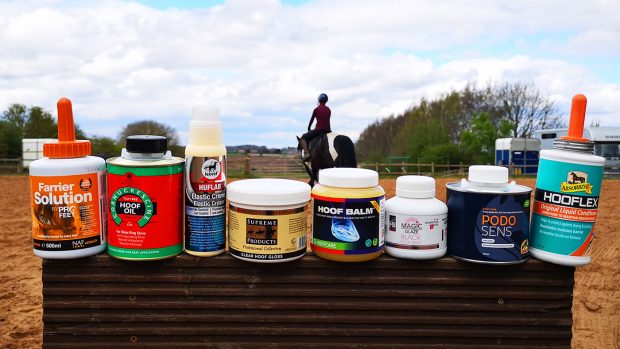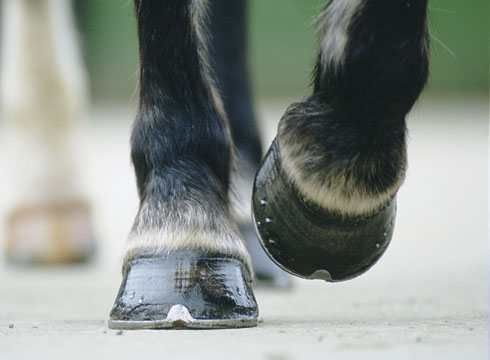A foreign body stuck in a horse’s foot is a common emergency that is not always taken as seriously as it should be. Although many of these wounds are superficial and respond well to first aid treatment, a deep puncture wound can cripple a horse.
As the hoof is hard and relatively tough, a puncture wound in this area will have been caused by something sharp, and potentially harmful, that is likely to have damaged the tissue.
A nail is often to blame for puncture wounds and may be pushed deep inside the foot as the horse stands on it. If you find a nail in your horse’s foot, it is critical to note:
- Where the nail penetrated the foot
- The angle at which it went in
- How deep in it went – in other words, the length of nail within the foot.When to remove a foreign body
In general, it is sensible to leave foreign bodies where they are wedged until you have professional help to remove them – it is important that items do not break off as you work them out. A nail in the foot is the one exception to this rule, as a horse may push the nail in further if it tries to stand on the limb.
If a nail is removed, it is recommended to mark the point at which it entered the horse’s foot. However, if the horse is so lame that he is not weight bearing at all, it is reasonable to leave the nail where it is and contact your vet urgently.
You need to note where the nail entered the foot, because the deeper it goes, the more dangerous it is – particularly if it pierces the middle third of the horse’s foot, where several vital structures are located (see diagram, below). These include:
- The navicular bone and its associated structures;
- The deep digital flexor tendon and its sheath; and
- The coffin joint.If you suspect that a foreign body may have pierced this danger zone, contact your vet immediately.
Preventing infection
Wounds that penetrate the toe of a horse’s foot may infect or break the pedal bone, while wounds in the heel tend to produce infection in the area of the puncture.
Gently scrubbing the site with a clean nailbrush and antiseptic such as pevidine or chlorhexidine (Hibiscrub), then applying a clean dressing or poultice, can be effective first aid for a superficial puncture. Dilute hydrogen peroxide is also useful to clean out minor wounds.
The foot needs to be kept clean and dressed until the puncture has sealed. This will probably take just a few days, providing there are no complications such as infection.
Assessing the depth of damage
If a dirty foreign body, such as a nail, reaches any of the vital structures within the foot, poulticing is unlikely to be sufficient.
Instead, your vet may recommend taking an X-ray of the area, using a probe at the site of the puncture, to assess how deeply the foreign body has penetrated the tissues. Sometimes, contrast material is used to highlight the site of the injury and surgery may be needed to drain infection and clean out the wound.
If vital structures such as the navicular bursa have been penetrated, the chance of a horse returning to soundness is reduced.
Bear in mind that punctures to the foot can be misleading – once a nail is removed, the injury can appear so much better that treatment is delayed until it is too late. In such cases, pain is not always a clear indicator that something serious is wrong, so if you are faced with a nail puncture that goes more than two centimetres into the foot, do not delay contacting your vet.
Sometimes, lameness may appear a few days after a superficial puncture as a result of infection, which can cause a foot abscess or pus in the foot – this will need to be drained by your vet or farrier.
Furthermore, tetanus is a significant risk with any foot puncture and is one of the many reasons why all horses should be vaccinated as a preventative measure.
HORSE tip: If you do not have a poultice to hand, a baby’s disposable nappy is ideal as an emergency dressing, to protect a puncture site from dirt and damage and to reduce the chances of infection developing.
For practical help on what to do in an emergency, invest in a copy of First Aid for Horses by Karen Coumbe (JA Allen, £19.99).
- This article first appeared in HORSE June issue



